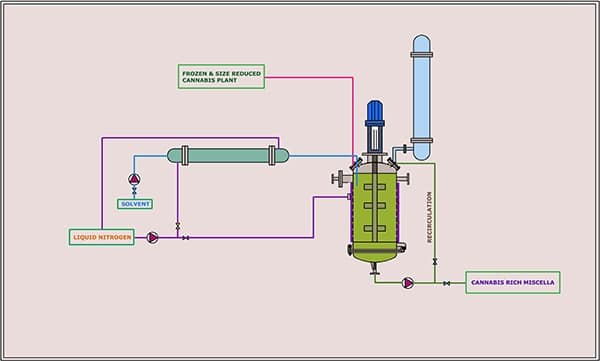Problems and their Solutions
For as long as cannabis has been around, people have been using their extracts for medicinal purposes. [1] These traditional extraction methods include the preparation of powders, heating under reflux, boiling in solvent, or simple organic extractions. Likewise, in the developing cannabis sector, much has been written on the existing methods used to achieve the products we are familiar with on the market today.
A recent publication provides a good overview of currently-available phytoflavonoid extraction techniques that resolve challenges from traditional methods, including time and energy consumption, use of toxic solvents, and generation of waste. [2] Some of these techniques include microwave– and ultrasound-assisted extraction, supercritical fluid extraction, and more.
One of the mainstay challenges in modern cannabis extraction has been the maintenance of terpene consistency across separate batches, and retaining terpene content in these products post-extraction. [3] That is because many terpenes are highly volatile, and elevated temperatures such as those applied during the evaporation of solvents in standard extraction techniques may result in a significant loss of terpene components.
One solution that is been developed is to capture terpenes by condensation as they escape, and later on reintroduce them back into the final oil. [4] Another has been more based on cultivar analysis. Terming the idea “Delta”, from the scientific symbol for ‘change’, laboratory services are seeking to figure out what changes between the initial terpene composition of the flower and that of the ultimate oil, and to reintroduce quantitatively those missing components. [5]
Another problem that has been identified is the need for formal Quality Assurance and Quality Control measures at all aspects of the extraction operation, from raw material to distillate all the way to final product. The challenges of doing so are not small, but a growing analytical sector catering to the cannabis industry is seeking to fill that role.
Image Courtesy of Clean Green Biosystems
References
- Sasidharan, S., et al. “Extraction, Isolation and Characterization of Bioactive Compounds from Plants’ Extracts”. Afr J Tradit Complement Altern Med. 2011; 8(1): 1–10[Times cited = 545, Journal impact factor = 0.553]
- Blicharski, Tomasz, and Oniszczuk, Anna. “Extraction Methods for the Isolation of Isoflavonoids from Plant Materials”. Open Chemistry. 2017; 15(1); 34–45[Times cited = 3, Journal impact factor = 1.425]
- Sexton, M., et al.“Evaluation of cannabinoid and terpenoid content:cannabis flower compared to supercritical CO2 concentrate”. Planta Med 2018; 84: 234–241 [Times cited = 6, Journal impact factor = 2.342]
- Hazekamp, A. “The Trouble with CBD Oil”. Med Cannabis Cannabinoids 2018;1:65–72[Times cited = 4, Journal impact factor = N/A]
- The Proble of Concentrate Consistency: Terpene Loss in Extraction. 2018. Steep Hill, Berkeley, CA. Retrieved February 21, 2019












